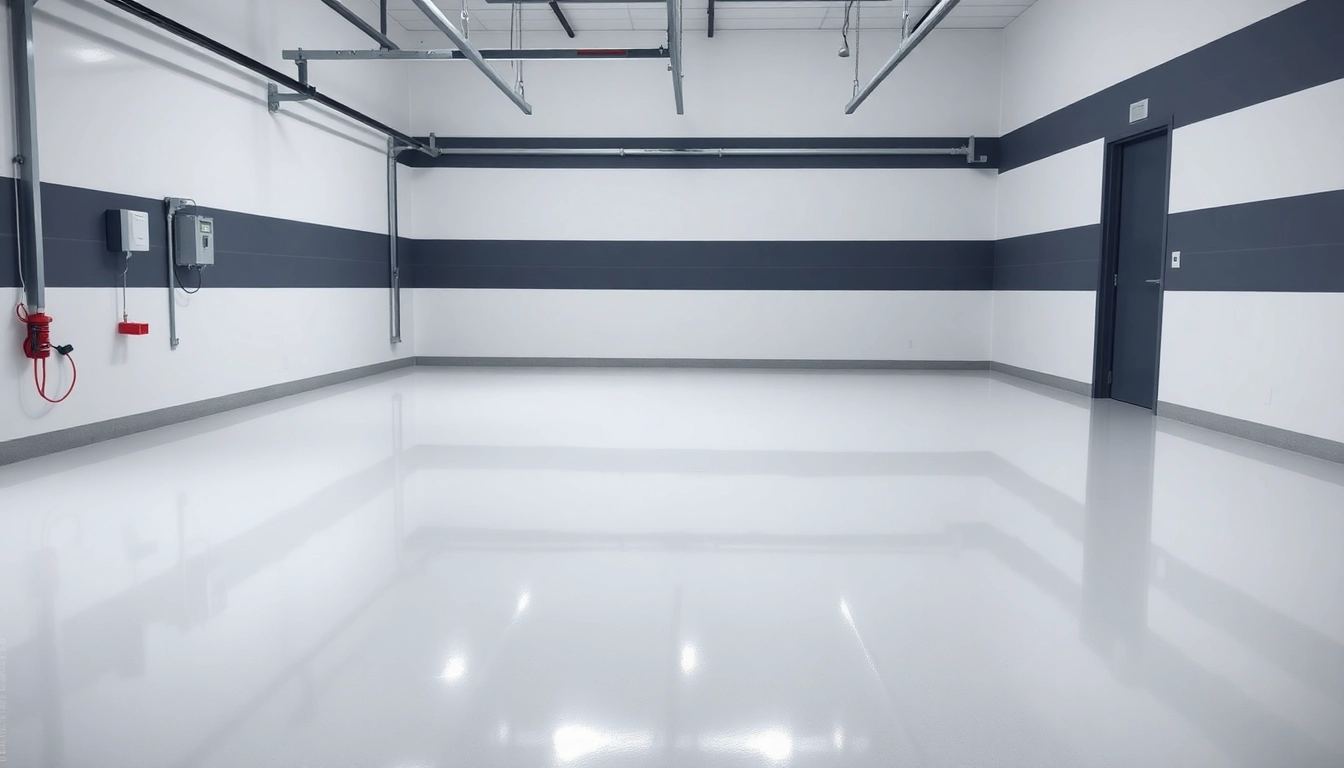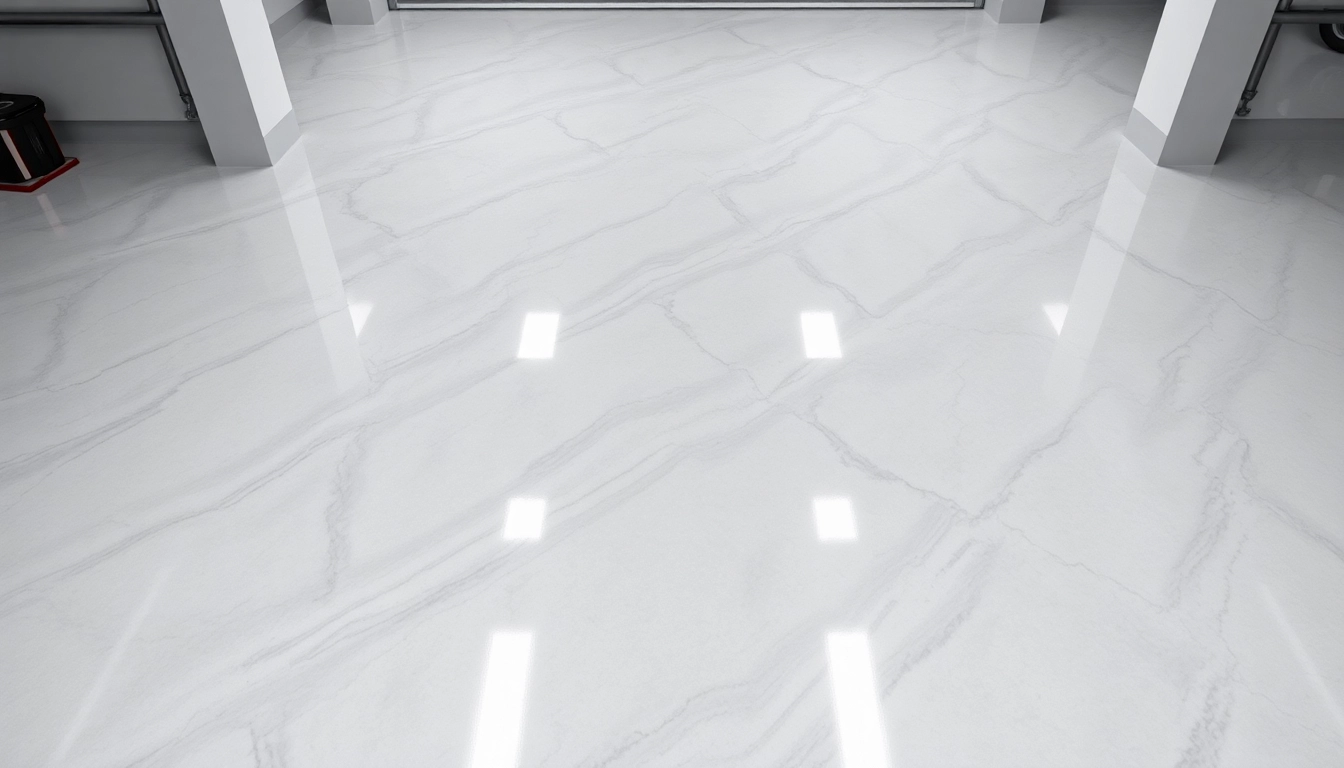Understanding the Benefits of Epoxy Resin Floors
Epoxy resin floors have gained immense popularity across both residential and commercial sectors, owing to their superior durability, aesthetic appeal, and cost-effectiveness. These floors are composed of a cohesive blend of resin and hardener that chemically bonds to create a hard, seamless surface capable of handling high traffic and demanding conditions. Whether you’re considering upgrading a garage, setting up a commercial warehouse, or installing a stylish basement finishing, epoxy resin floors offer an outstanding solution that marries functionality with design.
To explore these benefits thoroughly, it’s crucial to understand what makes epoxy floors stand out, especially when compared to traditional flooring options. For detailed insights, visit our comprehensive epoxy resin floor overview that emphasizes the key advantages suited to your specific needs.
What Makes Epoxy Resin Floors Stand Out in Durability
One of the most celebrated features of epoxy resin floors is their remarkable durability. When properly installed, epoxy creates a resilient surface that resists impacts, scratches, and abrasions—qualities essential in environments such as industrial warehouses, garages, and manufacturing facilities. Its chemical resistance also makes it ideal for handling spills of oils, solvents, and other corrosive agents, significantly reducing maintenance costs and extending the lifespan of the flooring.
Research indicates that high-quality epoxy floors can last up to 20 years with proper care, reinforcing their position as a long-term investment. The chemical bonding process during application results in a seamless, non-porous surface that prevents dirt and bacteria penetration, an essential trait for hygiene-sensitive environments like laboratories and food processing plants.
Advantages for Both Residential and Commercial Spaces
Epoxy resin floors are versatile and highly adaptable, making them suitable for numerous applications. In residential settings, epoxy floors transform garages, basements, and outdoor patios into stylish, easy-to-maintain spaces. They are available in a variety of finishes, from matte to high-gloss, and can be customized with decorative flake, metallic effects, or embedded logos.
In commercial environments, epoxy floors deliver exceptional performance under heavy foot traffic, vehicular movement, and equipment load. Their ability to withstand constant use without cracking or peeling reduces replacement frequency, leading to significant savings. Moreover, epoxy’s seamless surface facilitates cleaning and sanitization, essential for healthcare, food handling, and cleanroom applications.
Cost-Effectiveness and Long-Term Investment
While the initial cost of epoxy flooring installation might seem higher compared to traditional options like concrete or vinyl, the long-term savings are substantial. Epoxy floors require minimal maintenance—just occasional cleaning with mild detergents—and do not need frequent repairs or replacements. Additionally, their durability reduces downtime in commercial settings and preserves property value.
Many clients find that the aesthetic appeal combined with longevity results in a compelling return on investment. Furthermore, improvements in epoxy formulations have made installations more accessible and affordable, broadening their appeal beyond large-scale projects.
Choosing the Right Epoxy Resin Floor for Your Project
Types of Epoxy and Their Suitable Applications
Epoxy resins are available in various formulations tailored to specific needs:
- Self-leveling epoxy: Ideal for smooth, seamless surfaces in garages, showrooms, and kitchens. Its fluid consistency ensures even coating, creating a glossy finish.
- Quartz or flake epoxy: Incorporates decorative chips or flakes for improved slip resistance and visual appeal; suitable for commercial corridors and retail stores.
- Anti-static epoxy: Used in electronics manufacturing or laboratories, where controlling static electricity is crucial.
- High-build epoxy: Offers thicker coats for filling surface imperfections and providing additional protection in industrial settings.
Matching the epoxy type with the application ensures optimal performance and aesthetic results.
Factors to Consider: Thickness, Finish, and Color Options
Selecting the right epoxy involves more than just choosing a type. Considerations include:
- Thickness: Thicker coatings (typically 2–3 mm) are necessary for heavy-duty uses, while thinner layers suit decorative applications.
- Finish: From matte to high-gloss, the finish impacts appearance and slip resistance. High-gloss options enhance light reflection, making spaces appear larger.
- Color options: Epoxy floors come in a vast palette, enabling customization to match branding, decor, or personal style. Embedded flakes or metallic pigments can add creative twists.
Understanding these factors helps in making an informed decision aligned with your project’s functional and aesthetic goals.
How to Select a Reputable Supplier or Installer
The success of your epoxy resin floor hinges on choosing experienced suppliers and skilled installers. Look for:
- Proven track record with tangible project examples
- Positive customer reviews and testimonials
- Availability of clear project timelines and comprehensive warranties
- Use of high-quality, certified epoxy products
Moreover, ask for detailed quotations, including surface preparation, application techniques, and post-installation care. A certified professional guarantees the floor’s structural integrity and aesthetic excellence.
Step-by-Step Guide to Installing a Epoxy Resin Floor
Preparation of the Subfloor for Optimal Adhesion
Proper preparation is crucial in achieving a durable epoxy floor. Steps include:
- Cleaning and removing debris, oil, or old coatings
- Repairing cracks or surface imperfections with patching compounds
- Grinding or shot blasting to achieve a rough surface profile, enhancing epoxy bonding
- Ensuring the moisture levels are suitable, typically below 4% for concrete surfaces
This foundational work sets the stage for a successful, long-lasting epoxy coating.
Application Techniques for a Flawless Finish
Applying epoxy resin requires precision and attention to detail. The process generally involves:
- Mixing epoxy components thoroughly in accordance with manufacturer instructions
- Pouring the mixture evenly onto the prepared surface
- Using squeegees and rollers to spread the epoxy uniformly
- Incorporating decorative elements like flakes or metallic pigments, if desired
- Allowing appropriate curing times between coats and after the final layer
Environmental conditions, such as temperature and humidity, must be controlled to prevent bubbles and ensure proper curing.
Tips for Maintenance and Longevity of Your Epoxy Floor
To preserve the look and integrity of your epoxy floor:
- Clean regularly with non-abrasive, pH-neutral cleaners
- Address spills immediately to prevent staining or damage
- Avoid dropping heavy or sharp objects to prevent surface scratches
- Reapply coatings or waxes periodically if recommended by experts
Proper maintenance extends the lifespan and keeps your floor looking pristine for years.
Common Challenges and How to Overcome Them
Addressing Surface Cracks and Imperfections
Cracks may develop due to substrate movement or improper preparation. Solutions include:
- Filling cracks with suitable epoxy patching compounds
- Refinishing or overlaying with a new epoxy layer
Preventative measures involve controlling environmental factors and ensuring substrate stability prior to installation.
Preventing Bubbles and Ensuring Even Coating
Bubbles can occur from moisture, mixing errors, or environmental disturbances. Remedies involve:
- Applying epoxy in controlled temperature and humidity conditions
- Removing bubbles with torches or heat guns after application
- Using proper mixing and pouring techniques to minimize entrapped air
Consistent application practices lead to a smooth, bubble-free surface.
Dealing with UV Damage and Discoloration
UV exposure can cause epoxy floors to yellow or fade over time. Combat this by:
- Choosing UV-stabilized epoxy formulations
- Installing UV-protective topcoats for exposed outdoor spaces
Regular inspections and timely resealing preserve the aesthetic appeal.
Measuring Performance and Ensuring Customer Satisfaction
Key Metrics for Evaluating Epoxy Floor Durability
Performance indicators include resistance to wear and tear, chemical spill resilience, and surface integrity over time. Regular testing and inspections can help detect early signs of deterioration and inform maintenance schedules.
Feedback and Quality Assurance Practices
Gathering customer feedback mediates continuous improvement. Quality assurance involves compliance with industry standards and thorough inspections during and after installation, ensuring that expectations are met or exceeded.
Upgrade Ideas for Enhanced Aesthetic Appeal
Consider integrating LED lighting, custom logos, or textured finishes to elevate your epoxy flooring. Metallic pigments and color-shifting effects can create dynamic visual impressions, making your space uniquely stylish and functional.



